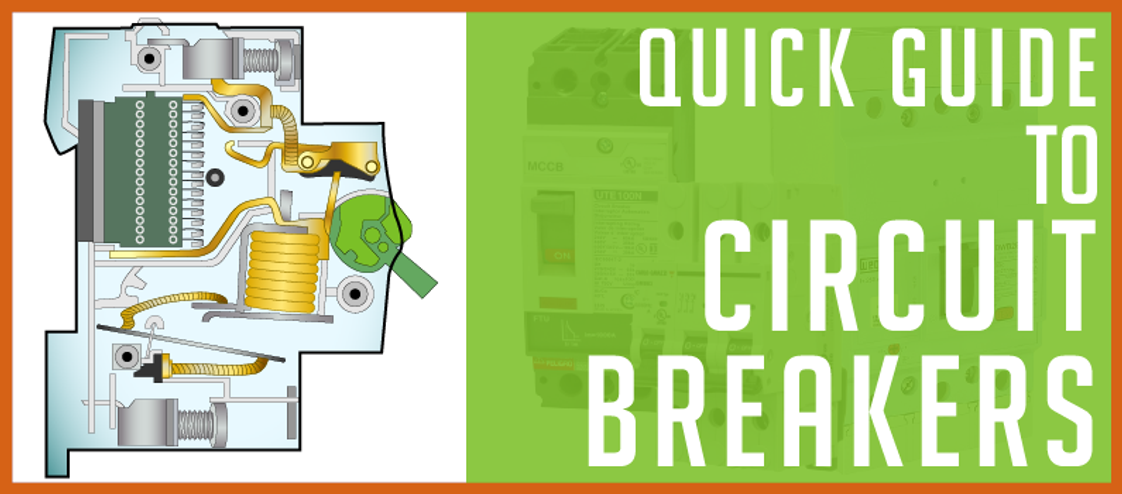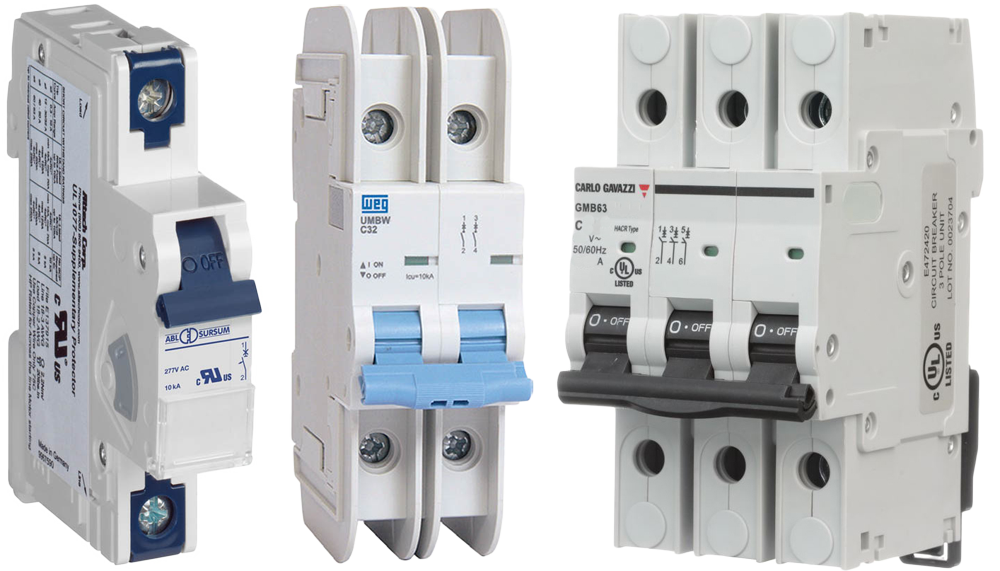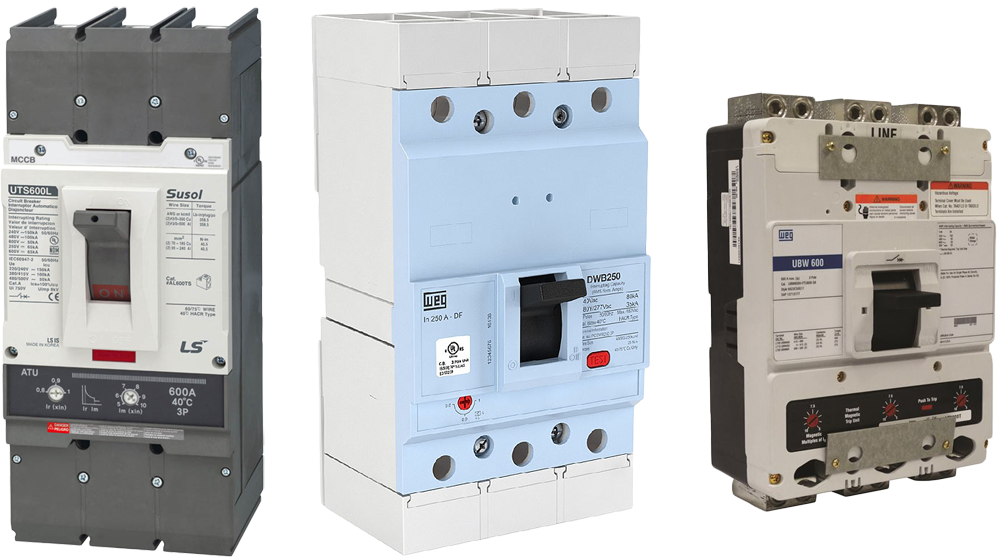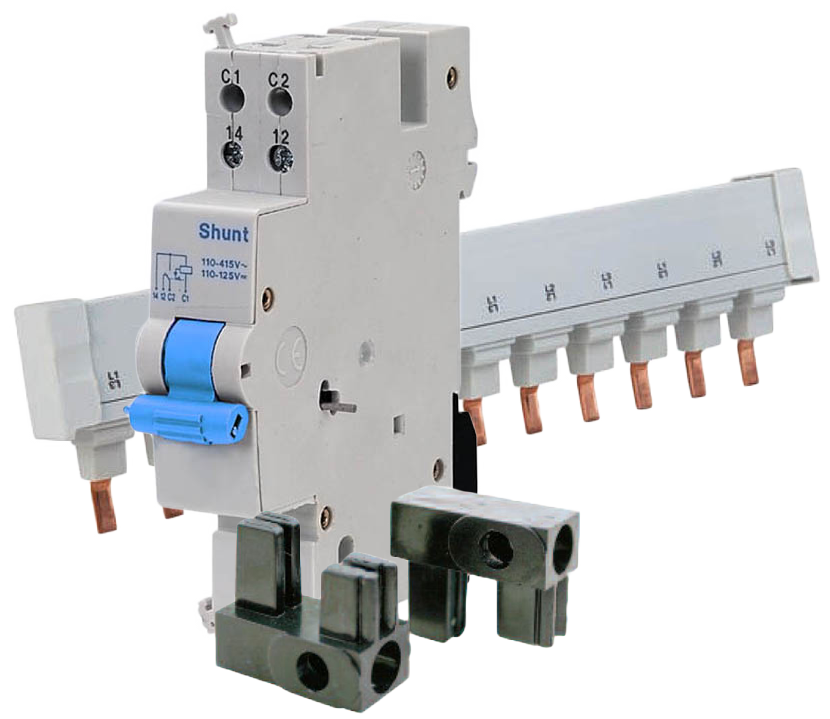
A Quick Guide to Circuit Breakers
Posted by Marshall Wolf on Jun 10th 2022
Circuit breakers, we’ve all seen one…
Whether the application is in your home or an industrial factory, breakers have become the standard. Until now you may have never had to learn more about them besides what to do when one is tripped, but let’s take a look at some of the details of a circuit breaker and how that will guide your purchase
Starting with the basics, we know a circuit breaker is a device that will interrupt the flow of current in an electrical circuit.
This interruption protects the surrounding electrical components and wiring from damage caused by either electrical overloads or short circuits.
Great, now that we know that; let’s explore the next step in figuring out what kind of circuit breaker you’re looking for.

The most common types of circuit breakers generally fall under two categories: MCCB (Molded Case Circuit Breaker) and MCB (Miniature Case Circuit Breaker).
The easiest way of discerning the two breakers is to remember a MCCB will be suited for higher energy environments, like commercial factories, while the mini-breakers are meant for smaller environments with lower current ratings.


Miniature Circuit Breaker (MCB)
- Rated current of no more than 100 Amps
- Trip current is usually not adjustable
- Thermal or thermal-magnetic operation
- Interruption current rating of up to 18,000 Amps (Depending on series and brand)
Molded Case Circuit Breaker (MCCB)
- Rated current up to 1000-2,500 Amps (depending on series and brand)
- Trip current may be adjustable
- Thermal or thermal-magnetic operation
- Interruption current rating of up to 200,00 Amps (Depending on series and brand)
Now that we’ve determined the sizing of your circuit breaker we should move on to protection ratings. Commonly circuit breakers will have one of these protection ratings: UL489, and UL1077.
Wondering where UL508 protection ratings went? Find out here!
Considered to be the standard according to the National Electrical Code, UL489 listed circuit breakers are defined as “any listed circuit breaker that has an interrupting rating other than 5,000 Amps.

Overload tests are performed at 6x the current rating of the device or 150A minimum. Devices rated up to 600V and 6,000A are covered in this standard.
Beyond overload protection the UL489 rated circuit breaker must offer short circuit protection, switching functionality, as well as disconnection function.
Lastly, most UL489 devices are used in electrical distribution panels; therefore, the minimum current ratings available are seldom less than 15A.
“The rating used for supplementary protection devices intended for use as overcurrent, over-voltage or under-voltage protection within an appliance or other electrical equipment where branch circuit overcurrent protection is already provided or is not required.”
In layman’s terms, extra protection added on. Most UL 1077 circuit breakers are rated up to 63A/480Y/277V AC while the primary standard for UL1077 is the “fit-for-further-use” after a trip protection rating.

Now that we’ve covered protection ratings, let’s review the differences between AC and DC circuit breakers and the optional number of poles.
We know a circuit breaker’s primary function is to detect and trip when too much current (amps) is flowing through the circuit in order to protect the wiring from overheating.
During the act of disconnecting, the internal contacts separate and an arc is formed as the current jumps across the air gap. (You have seen this happen on a smaller scale with a static electric shock.)
If this arc continues to jump the air gap, the current will continue to flow through the circuit, defeating the purpose of the breaker. This arc must be extinguished. The AC and DC breakers extinguish this arc differently making AC and DC breakers not interchangeable.
Check out this super informative video from Solar Solution to learn more about how AC and DC circuit breakers differ.
Trip Characteristics (also known as trip-curves) are another deciding factor when buying a circuit breaker.
Marshall Wolf carries breakers using trip characteristics B, C, and D curves as they are the most commonly used but it’s worth mentioning circuit breakers can also include Z or K curves.
The easiest way to describe trip characteristics is to think of them as the thresholds in which the breaker will trip and will need to reset. Generally, the higher the current spike, the faster the breaker will trip.

Type B trips between 3 and 5 time full load current.
These devices are commonly used in domestic systems and light commercial applications where surges are low, for instance where inrush currents may come from a small number of fluorescent fittings.
Relatively long thermal trip delay and but low magnetic trip point.
See all of Marshall Wolf’s B-Trip Protector Circuit Breakers here!
Type C trips between 5 and 10 times full load current Type C MCBs are most suitable for commercial and industrial use, where there are motors and perhaps a high number of fluorescent fittings which, when switched off together may cause a high inrush current.
Relatively long thermal trip delay and medium magnetic trip point.
See all of Marshall Wolf’s C-Trip Protector Circuit Breakers here!
Type D trips between 10 and 20 times full load current.
Type D units are for more specialist industrial use, where current inrushes can be high, for example with X–ray machines, pumping motors and transformers. They may require a lower earth loop impedance (Zs) to achieve the operating times required.
Relatively long thermal trip delay and very high magnetic trip point.
See all of Marshall Wolf’s D-Trip Protector Circuit Breakers here!
Special thanks to Michael Cooper and Klaus Tum from Altech for this explanation on trip curve characteristics.
Lastly, let’s talk about optional accessories…

Similar to contactors, our circuit breakers come with an array of accessory options based on your application needs. Depending on if you’re installing multiple breakers and are in need of busbars or have an emergency back-up system requiring a shunt our tech support can assist in finding the right accessory to further improve your circuit breaker’s efficiency and life span.
While accessories are brand specific, here’s a list of the more common accessories that can be found with MCBs and MCCBs:
MCB Optional Accessories
MCCB Optional Accessories
- Auxiliary Contact
- Alarm Indicator
- Shunt Trip Module
- Under/Over Voltage Module
- Locking Device
- Busbar and busbar accessories
- Motor Circuit Protector
- Molded Case Switch
- Terminal Shield
- Direct or Extended Handle
- Flange Cable Handle
- Mechanical Interlock
- Overload Relay
- IEC Contactor
- Terminal Shield
- Interphase Barrier
- Mechanical Lug
- Operating Mechanism
- Auxiliary Contact
- Locking Device
- Busbar and busbar accessories
Now that we have a better idea of what to look for in circuit breaker, visit Marshall Wolf’s selection of UL certified circuit breakers or if you have questions feel free to contact us directly for sales and technical assistance.
